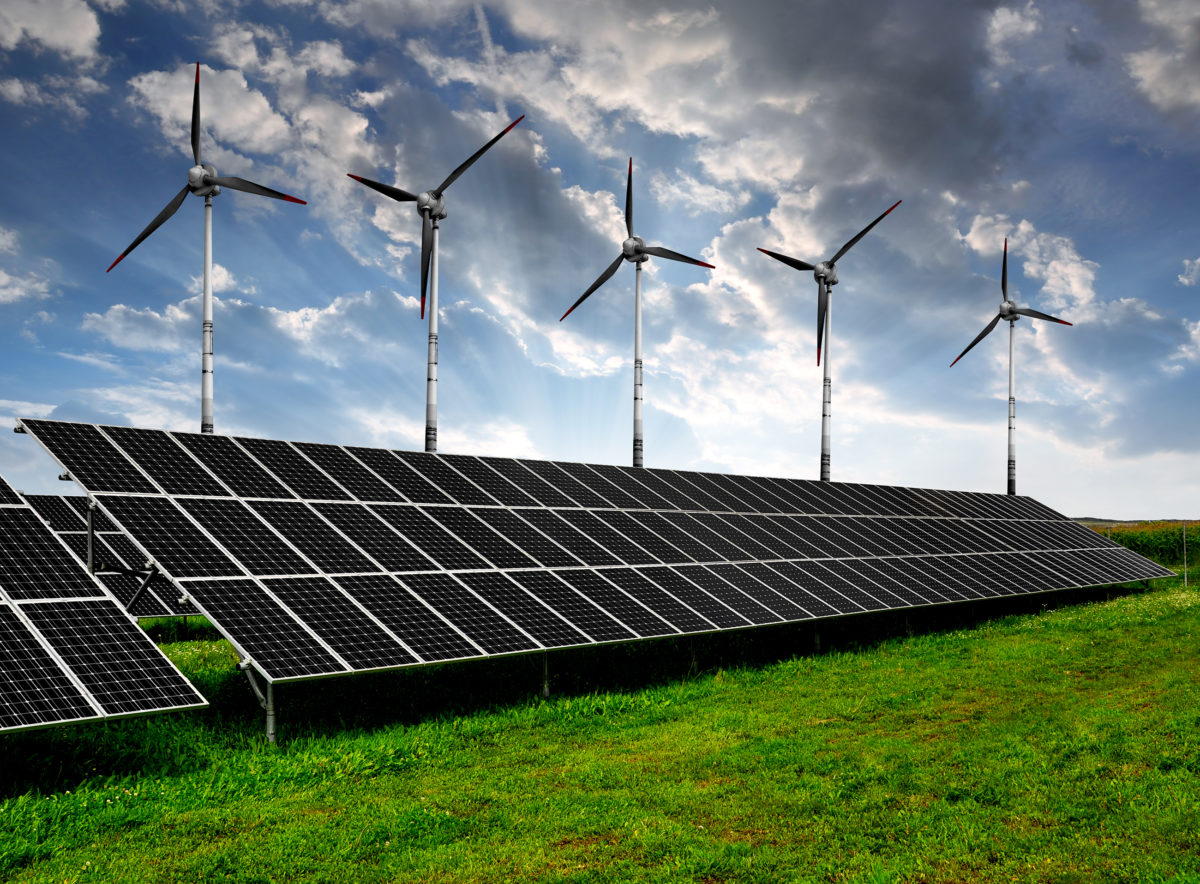Intermittency between Renewable Energy sources like solar and wind power remains one of the most challenging aspects of sustainable energy solutions.
A reliable and consistent power supply becomes significant as the world adopts green energy alternatives to deal with climate change and mitigate dependence on fossil fuels.
This blog uncovers the basics behind Hybrid Power Plants and showcases how the integration of wind-solar energy, and energy storage systems can create a stable power grid.
So, let’s get going.
Introduction to Hybrid Power Plants
Hybrid power plants are a combination of different energy generation and storage technologies to develop an efficient power supply system.
At their core, they integrate different renewable energy sources like solar panels and wind turbines, and energy storage systems like batteries. This integration enables continuous power generation, even when one source is performing with low capacity or completely unavailable.
For example, in cloudy weather when solar panels perform at a low capacity, wind turbines keep generating electricity continuously, and vice versa.
Source: https://bit.ly/4fwVaVy
The Challenge of Intermittency in Renewable Energy
Intermittency is one of the key challenges for Hybrid Renewable Energy Systems. Let’s have a look into the particular issues each one has.
Solar power intermittency
|1. Dependency on sunlight
Solar panels are completely dependent on sunlight. They generate electricity when there is availability of enough sunlight. It shows that power production decreases significantly in cloudy/rainy weather and completely stops throughout the night.
|2. Seasonal variability
Solar energy production can be different with the season and climate changes. In the winter, days are shorter and sun angles are low. So it reduces the solar energy production accordingly.
|3. Geographical limitations
Solar power has geographical limitations. Regions closer to the equator get more sunlight during the year, whereas higher latitude areas have to deal with seasonal variation.
Wind power intermittency
|1. Wind speed variability
Wind turbines need particular wind speeds for smooth functioning. They can not generate power with too little wind and with too much wind they need to shut down to avoid major damage. This causes fluctuation while generating power.
|2. Weather conditions
Wind patterns are very unpredictable and keep changing rapidly. Sudden changes in wind direction/speed can break stability while generating power.
|3. Geographical factors
Similar to solar power generation, wind energy production can be different based on location. Coastal regions and open plains receive more consistent wind speeds compared to other areas.
Combined challenges for the power grid
Grid stability
Because of the inconsistency of solar and wind power, it is difficult to manage a continuous power supply. Power grids require a stable and reliable electricity flow for smooth functioning. If renewable energy drops suddenly, it can be the reason for any disruptions.
Energy storage
Efficient energy storage systems are needed to decrease intermittency. Energy storage solutions, like batteries, have the capacity to store surplus energy produced during peak production periods and release it when production is low. However, these systems are very expensive and have limitations when it comes to capacity and lifespan.
Source: https://bit.ly/4eBc04l
How Hybrid Power Plants Address Intermittency
Solar and wind integration
Solar panels generate electricity during the sunlight, but they release power throughout the night/cloudy weather. On the other hand, wind turbines generate power both day and night, usually complementing solar power. The reason is wind patterns could be stronger during the evenings and in particular seasons.
By integrating these two sources, a hybrid power plant can deal with power production fluctuations, with a more reliable energy supply.
Source: https://bit.ly/3Z9zjha
Energy storage solutions
Wind-solar energy storage systems like batteries can store excess electricity produced during sunny or windy days and release it during nighttime or cloudy weather.
Advanced storage solutions like thermal, compressed air storage, flywheel, etc. manage energy supply effectively. Even though it is expensive and has capacity limitations, these technologies keep evolving, making them more suitable for large-scale usage.
Source: https://bit.ly/3Obwdmx
Demand response and Grid management
Hybrid power plants can be combined with smart grid technologies. It observes and manages real-time electricity use. It improves supply with demand, decreasing the grid stress and enhancing overall stability.
Demand response strategies encourage customers to use electricity during off-peak time. This approach helps balance demand and allow efficient use of generated energy.
Source: https://bit.ly/4hSDxRK
Hybrid configuration
Some hybrid power plants add extra renewable sources like hydropower/geothermal energy, or also integrate traditional fossil fuels as a backup, to provide more reliability. These different sources can be managed dynamically for improved energy output and decrease dependencies on a particular source.
This strategy makes sure that if one energy source is not performing well, others can balance, and deliver a steady electricity flow.
Source: https://bit.ly/4ewRXnK
Advantages of Hybrid Power Plants
- Enhanced reliability
- Increased efficiency
- Grid stability
- Reduced environmental impact
- Cost savings
- Flexibility and scalability
- Energy security
- Innovation and technological advancements
- Support for remote ad off-grid areas
The Future of Hybrid Power Plants
Hybrid power plants showcase a significant advancement in the reliable energy solutions. As technology keeps evolving, the future of solar and wind hybrid systems looks highly promising.
Here are some key trends that are about to dominate the future of Hybrid Renewable Energy Systems.
- Advancements in energy storage technologies
- Next generation batteries
- Solid-state batteries
- Advanced lithium-ion variants
- Alternative storage solutions
- Thermal storage
- Hydrogen fuel cells
- CAES (Compressed Air Energy Storage)
- Next generation batteries
- Integration with smart grids
- Real-time monitoring and control
- Demand response
- Predictive maintenance
- IoT and AI
- Predict energy demand
- Predict supply patterns
- Real-time monitoring and control
- Expansion of renewable energy sources
- Diversification
- Wave and tidal energy
- Advanced geothermal systems
- Bioenergy
- Microgrids and decentralization
- Microgrids-small-scale
- Localized power networks
- Reduced transmission losses
- Enhanced resilience
- Diversification
- Policy and regulatory support
- Incentives and standards
- Supportive government regulations
- Tax incentives
- Funding
- Sustainability goals
- Climate goals
- Carbon reduction targets
- Incentives and standards
- Cost reduction and economic viability
- Economies of scale
- Innovative business models
- EAAS (Energy as a Service)
- PPAs (Power Purchase Agreements)
Summing Up
The future of solar and wind hybrid plants seems bright, with various technological, economic, and environmental advantages. By leveraging the strengths of different renewable energy sources and advanced storage systems, hybrid power plants will play a significant role in generating a resilient energy future.
As innovation and support for Hybrid Renewable Energy Systems keep evolving, it will be at the top of the global transition to clean energy.



